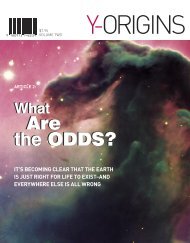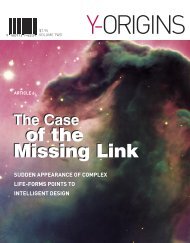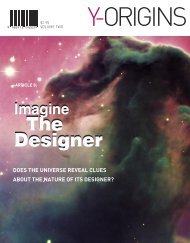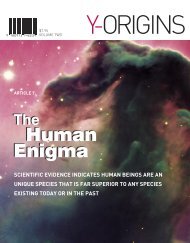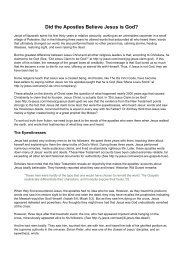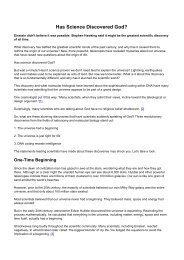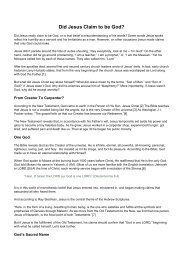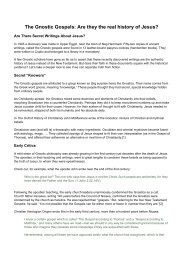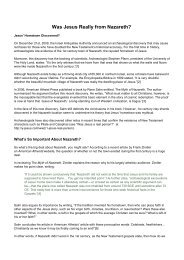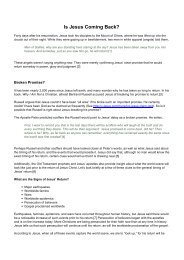half_an_eye4
You also want an ePaper? Increase the reach of your titles
YUMPU automatically turns print PDFs into web optimized ePapers that Google loves.
Looking down at Greenl<strong>an</strong>d from 32,000<br />
feet on my trip from Rome to Seattle, I<br />
heard a str<strong>an</strong>ge noise in the aircraft that<br />
sent my blood pressure soaring into hyperspace.<br />
Suddenly I beg<strong>an</strong> to wonder what<br />
would happen if one tiny part on the enormous<br />
Boeing 747 failed. Engines, hydraulics,<br />
air pressurization—all were complex<br />
systems that worked only when several<br />
interdependent parts functioned properly.<br />
In vain I sought comfort in my airline<br />
pretzels, but comfort c<strong>an</strong> never be found in<br />
low-fat foods. I kept thinking of all those<br />
dedicated employees (excuse me: “members<br />
of the Boeing family”) shown on the commercials<br />
who apparently love nothing more in<br />
life th<strong>an</strong> a well-oiled 747 <strong>an</strong>d who perpetually<br />
ponder my safety. But the nagging thought<br />
still popped into my head: “Just one faulty or<br />
missing part <strong>an</strong>d I’d become part of the first<br />
bomb ever to be dropped on Greenl<strong>an</strong>d.”<br />
(those who believe nothing exists outside<br />
of the material world) assume there is some<br />
natural process that created such systems.<br />
The real issue here is whether or not a<br />
designer is behind such complexity. There<br />
are four possibilities:<br />
1. A designer created biological complexity<br />
supernaturally<br />
2. A designer created biological complexity<br />
through natural processes<br />
3. A designer combined natural<br />
processes <strong>an</strong>d supernatural me<strong>an</strong>s to<br />
create biological complexity<br />
4. A designer doesn’t exist. Complexity<br />
came about naturally.<br />
Materialists believe the latter. Scientists<br />
who advocate intelligent design generally<br />
agree that some superintelligence is behind<br />
it all, even though they leave the nature of<br />
a designer to theologi<strong>an</strong>s.<br />
THE EYE<br />
IS<br />
LIKE A<br />
TELEVISION<br />
CAMERA—BUT<br />
FAR MORE<br />
SOPHISTICATED<br />
In one sense, biological systems are like<br />
my Boeing 747: one missing or defective<br />
part <strong>an</strong>d they won’t work. Here lies one of<br />
the major un<strong>an</strong>swered problems of biology.<br />
How did highly complex, interdependent<br />
biological systems like the eye develop<br />
slowly over eons of time? They would never<br />
have worked until fully developed.<br />
Let’s step back for a minute <strong>an</strong>d think about<br />
all this.<br />
Airpl<strong>an</strong>es, automobiles, cell phones, computers,<br />
<strong>an</strong>d other complex machines, c<strong>an</strong><br />
always be traced back to a designer. However,<br />
with biological systems, materialists<br />
Here we must look at the evidence to see<br />
which of the possibilities makes the most<br />
sense. To determine the best option, we<br />
need to look closer at complex biological<br />
systems to determine whether they c<strong>an</strong> be<br />
explained by natural causes alone.<br />
THE PROBLEM WITH HALF AN EYE • ARTICLE 4• 5




